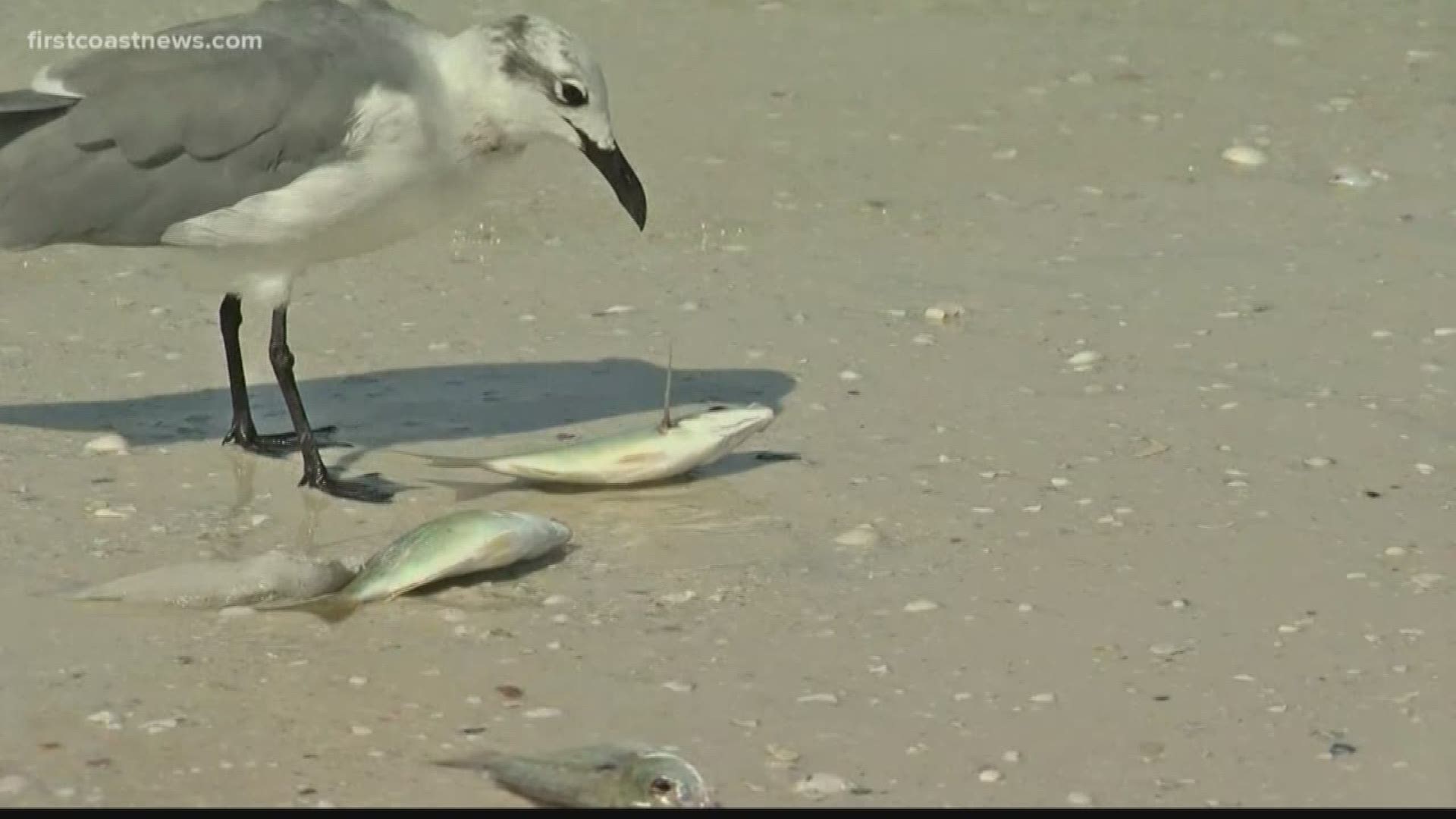JACKSONVILLE, Fla. -- A large portion of Florida’s coastline is being invaded by what’s called a “red tide”, which has been naturally occurring along the Gulf Coast since the 1800's, but now scientists say it's back with a vengeance. They are reporting the worst red tide in nearly a decade.
Dr. Andy Ouellette is a professor of biology at Jacksonville University and oversees the Marine Science Research Institute. He breaks down the harmful effects of a red tide and how it differs from blue-green algae:
What is red tide? What causes the red tide?
There are different kinds across the globe, and they are all classified as harmful algal blooms, which are caused by microscopic organisms – different types of plankton. The SW Florida red tide is caused by an organism called Karenia brevis, which causes red tide every year in the Gulf of Mexico. Red tides have been reported since the 1700s, so they are a natural phenomenon, but the annual appearance of them is believed to be at least partially due to human activity.
When did the Current red tide start?
There is typically a red tide every year during late summer and autumn. But this bloom started in October 2017– offshore, and has persisted through the winter, spring, and for the past few months has been onshore causing a lot of problems. Winds and water currents push the red tide to the shore, and nutrients from run-off (fertilizers) cause the bloom to grow even more. Water, salinity, and nutrients affect how fast the plankton can grow.
There are reports of dead animals, such as fish, sea turtles, manatees, dolphins – what causes that?
Karenia brevis produces potent nerve toxins – nerve cells must fire electrical signals and these toxins “depolarize” the cells, blocking that nerve firing.
- For example, fish eat prey that have ingested Karenia, and toxins are also absorbed by the gills (and gills stop functioning). Dolphins eat toxic fish (due to toxins in the fish gut, not in the tissue), and manatees eat the Karenia when they are mixed in with the vegetation and when they eat other microscopic critters that accumulated the toxin. Some sea turtles eat crabs, sometimes fish, and some sea grass.
- Marine mammals and turtles often drown since they cannot swim properly and have respiratory distress.
- AND – it gets in the AIR.
- Waves can break open the cells, and the toxins can get aerosolized
- Respiratory irritation – many reports of people in SW FL having respiratory issues.
- Can go up to a mile inland!!
- ALSO, when shellfish (oysters, mussels, clams) feed, they do so by filtering the water and ingesting the particles, including this Karenia brevis.
- The shellfish end up accumulating and concentrating the nerve toxins and their breakdown products in their tissue, so when a person eats these contaminated shellfish, they can get neurotoxic shellfish poisoning – symptoms include tingling of the lips, toes, fingers, loss of balance, rapid heartbeat, and more.
- And it’s not just toxins – when you get massive fish kills, which is not uncommon, then when the fish decay, the bacteria use up all of the oxygen thereby killing more fish in the area due to suffocation.
What can be done?
- It is part of the natural ecosystem, so we need to be careful
- Current bloom is about 150 miles long and 1-2 miles wide (about 3 feet deep) so it is very daunting. There may be nothing to stop it once it happens – for example, spraying something to kill the red tide would mean killing a lot of other organisms.
- Scientists at Mote Marine Lab are doing trials of using ozone to treat the water to destroy the cells and toxins, but those are still in early stages.
- Some compounds from seaweed have been shown to inhibit and kill Karenia are being studied
- Clay can kill the Karenia and bring them and toxins to the bottom, but then that can cause problems for the organisms that live in the bottom.
What is the difference between the blue green algae in the St. Johns River vs Red tide?
- Very different types of organisms: freshwater bacteria vs marine eukaryote
- FW blooms are often mixed algae, red tide is typically one type of species.
- Blue green algae form liver, nerve, skin toxins; this red tide – nerve toxin

